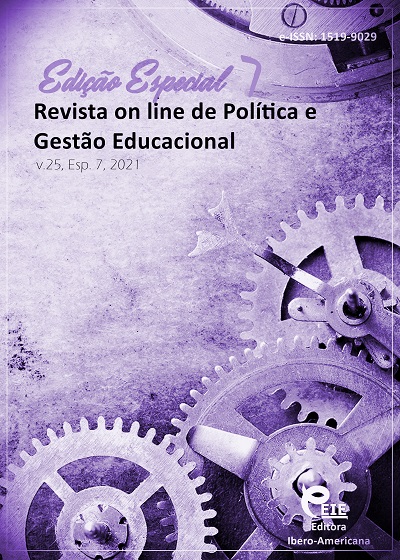The effect of handicraft education on urban life relations
DOI:
https://doi.org/10.22633/rpge.v25iesp.7.16185Keywords:
Handicraft, Urban life relations, Citizens of TehranAbstract
As an independent and indigenous industry, the most prominent applied art of Iran and one of the top three handicraft poles in the world, Iran’s handicraft has been deeply rooted in the rich and fertile culture of Islamic Iran. This was an applied study performed by an exploratory and mixed (qualitative-quantitative) method. The statistical population included all individuals who visited the art centers of Tehran, Iran in 2019 and also people who educated in this field. Subjects were performed by multistage stratified sampling and convenience sampling using interviews. An 18-item questionnaire with cognitive, cultural and social dimensions was prepared based on data obtained from interviews and theoretical foundations. According to the results, the revival and promotion of handicraft use affected all three components of urban life relations. According to the regression analysis results, handicraft revival and promotion predicted 23%, 23%, and 19% of cognitive, cultural and social components of urban life relations, respectively.
Downloads
References
BAZARGAN, A. Introduction to Qualitative and Mixed Research Methods, Tehran, Didar Publications, Tehran, Iran, 2008.
BODENHAM, P. Ceramics and locational identity: Investigating the symbolism of material culture in relation to a sense of place. Craft Research, v. 9, n. 2, p. 287-310, 2018.
CARBALLO, D. M. Urban life on Teotihuacan's periphery–new research at the Tlajinga district. Ancient Mesoamerica, v. 30, n. 1, p. 91-94. 2019.
FATHI, S. An Analysis of Social Relations in Sustainable Urban Space. Journal of Iranian Social Development Studies, v. 4, n. 4, p. 47-67. 2012.
FISHER, K. D.; MANNING, S. W.; URBAN, T. M. New Approaches to Late Bronze Age Urban Landscapes on Cyprus: Investigations at Kalavasos-Ayios Dhimitrios, 2012–2016. American Journal of Archaeology, v. 123, n. 3, p. 473-507, 2019.
GOLDING, R. Freud, Psychoanalysis, and Sociology: Some Observations on the Sociological Analysis of the Individual. The British Journal of Sociology, v. 33, n. 4, p. 545, 1982.
OWENS, B. R. Producing Parsons’ Reputation: Early Critiques of Talcott Parsons’ Social Theory and the Making of a Caricature. Journal of the History of the Behavioral Sciences, v. 46, n. 2, p. 165–188, 2010.
PARSONS, T. The Social System. New York and London: The Free Press and Collier Macmillan, 1951.
PARSONS, T. 'The prospect of sociological theory', reprinted in Essays in Sociological Theory. New York, Free Press, 1954.
PARSONS, T.; BALES, R. F. Family, Socialization and Interaction. New York and London: The Free Press and Collier Macmillan, 1955.
PRINCE, S. Dwelling and tourism: embracing the non-representational in the tourist landscape. Landscape Research, 2018.
SALEHI AMIRI, S. R. Cultural Pathology in Iran. 1. ed. Qoqnoos Publications, Tehran, Iran. 2013.
SEDREHNESHIN, R. et al. The Survey of the Handcraft's Application Reduction Factors in Contemporary Life in Functionalism Theory. 2016. Thesis (Master’s in Handicrafts) – School of Art, Al-Zahra University, 2014.
WOOD, G. L.; HABER, J. Nursing research. St. Louis: Mosby Co, 20002.
XIE, B.; ZHU, X.; GRYDEHØJ, A. Perceiving the Silk Road Archipelago: Archipelagic relations within the ancient and 21 st-Century Maritime Silk Road. Island Studies Journal, v. 15, n. 2, 2020.
Published
How to Cite
Issue
Section
License
Copyright (c) 2022 Revista on line de Política e Gestão Educacional

This work is licensed under a Creative Commons Attribution-NonCommercial-ShareAlike 4.0 International License.
Manuscritos aceitos e publicados são de propriedade da Revista on line de Política e Gestão Educacional. É vedada a submissão integral ou parcial do manuscrito a qualquer outro periódico. A responsabilidade do conteúdo dos artigos é exclusiva dos autores. É vedada a tradução para outro idioma sem a autorização escrita do Editor ouvida a Comissão Editorial Científica.











